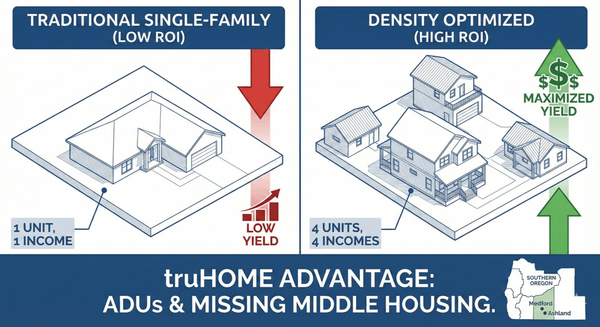Decoding Your Local Market: How to Know if You Have the Upper Hand
National headlines paint a broad picture of the U.S. real estate market, but the old saying is true: all real estate is local. The conditions in your specific town, or even your neighborhood, could be completely different from the national average.
So, how can you become an expert on your own market? By understanding a few key indicators, you can get a clear picture of whether buyers or sellers have the upper hand. Here’s what to look for this fall.
- Inventory Levels (Months of Supply)
This number tells you how long it would take to sell all the currently listed homes if no new homes came on the market.
- Seller's Market (Under 4 months): With low inventory, there's high competition among buyers, often leading to multiple offers and faster sales. Sellers hold more negotiating power.
- Balanced Market (4-6 months): There's a healthy equilibrium between the number of buyers and available homes. Negotiation is more common and prices tend to be stable.
- Buyer's Market (Over 6 months): A high inventory of homes gives buyers more choices and more leverage. Homes may stay on the market longer, and sellers may need to be more flexible on price and terms.
- Average Days on Market (DOM)
DOM tracks the average number of days a home is listed before the seller accepts an offer.
- Falling or Low DOM (e.g., under 30 days): This is a sign of a hot market where buyers are acting quickly. If you're a seller, it's a great time to list. If you're a buyer, you need to be prepared to move fast.
- Rising or High DOM (e.g., over 60 days): This indicates the market is cooling. Buyers have more time to consider their options, and sellers may need to focus on perfect pricing and presentation to stand out.
- List-to-Sale Price Ratio
This ratio compares a home's final sale price to its last list price.
- At or Above 100%: Homes are selling for their asking price or more. This is a strong indicator of a seller's market, where bidding wars may be common.
- Below 100% (e.g., 97-99%): This suggests a more balanced market where buyers have some room to negotiate below the list price.
While these numbers provide a snapshot, they don't tell the whole story. The best way to understand what's truly happening in your neighborhood is to consult an expert. A truHOME, inc. agent can provide a detailed, hyper-local market analysis to help you build a winning strategy.
Ready to find out what the numbers say about your specific market? Contact us for a personalized, data-driven consultation. www.truHOME.net

Categories
Recent Posts











